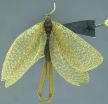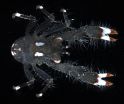(Press-News.org) DALLAS – Feb. 15, 2013 – Two studies by researchers at UT Southwestern Medical Center could lead to new treatments for lupus and other autoimmune diseases and strengthen current therapies for viral, bacterial, and parasitic infections.
The studies identify a new enzyme that acts as a sensor of innate immunity – the body's first line of defense against invaders – and describe a novel cell signaling pathway. This pathway detects foreign DNA or even host DNA when it appears in a part of the cell where DNA should not be. In addition, the investigations show that the process enlists a naturally occurring compound in a class known to exist in bacteria but never before seen in humans or other multicellular organisms, said Dr. Zhijian "James" Chen.
Dr. Chen, professor of molecular biology and a Howard Hughes Medical Institute (HHMI) investigator at UTSW, is senior author of both studies available online and published in today's print edition of Science. Although the immune-boosting response of DNA has long been recognized, the mechanism underlying that response remained a mystery, he said.
"In his 1908 Nobel acceptance speech, Ilya Mechnikov noted that surgeons in Europe treated patients with nucleic acids – the building blocks of DNA – to boost their patients' immune responses. That observation came four decades before scientists showed that DNA was the carrier of genetic information," Dr. Chen said.
Dr. Chen credits a uniquely biochemical approach for solving the longstanding puzzle. The approach used classical protein purification combined with a modern technology called quantitative mass spectrometry to identify the mysterious compound at the heart of the discovered process.
Under normal conditions, DNA is contained within membrane-bound structures such as the nucleus and mitochondria that are suspended within the cell's soupy interior, called the cytoplasm, he said. DNA in the cytoplasm is a danger signal that triggers immune responses, including production of type-1 interferons (IFN).
"Foreign DNA in the cytoplasm is a sign of attack by a virus, bacteria, or parasite," Dr. Chen said. "Host DNA that somehow leaks into the cytoplasm can trigger autoimmune conditions, like lupus, Sjogren's syndrome, and Aicardi-Goutiere's syndrome in humans."
In these studies, UTSW researchers identified a new sensor of innate immunity – the enzyme cyclic GMP-AMP synthase (cGAS) – that sounds a cellular alarm when it encounters DNA in the cytoplasm. After the enzyme detects and binds to the DNA, it catalyzes the formation of a compound called cyclic GMP-AMP (cGAMP), the compound never before seen in humans, Dr. Chen said.
The cGAMP functions as a second messenger that binds to an adaptor protein called STING, which activates a cell signaling cascade that in turn produces agents of inflammation: interferons and cytokines.
"Normally this pathway is important for immune defense against infections by microbial pathogens. However, when the immune system turns against host DNA, it can cause autoimmune diseases," Dr. Chen said. "Our discovery of cGAS as the DNA sensor provides an attractive target for the development of new drugs that might treat autoimmune diseases."
INFORMATION:
Other UT Southwestern scientists involved were the lead author of the cGAS study Dr. Lijun Sun, assistant professor of molecular biology and HHMI research specialist III; the lead author of the cGAMP study Jiaxi Wu, a graduate student of molecular biology; Dr. Fenghe Du, research associate in molecular biology and a research specialist II at the HHMI; Dr. Xiang Chen, research associate in molecular biology and HHMI research specialist I; Dr. Heping Shi, postdoctoral researcher of biochemistry; and Dr. Chuo Chen, associate professor of biochemistry.
The studies were funded by the National Institutes of Health and by the HHMI.
About UT Southwestern Medical Center
UT Southwestern, one of the premier medical centers in the nation, integrates pioneering biomedical research with exceptional clinical care and education. The institution's faculty has many distinguished members, including five who have been awarded Nobel Prizes since 1985. Numbering more than 2,700, the faculty is responsible for groundbreaking medical advances and is committed to translating science-driven research quickly to new clinical treatments. UT Southwestern physicians provide medical care in 40 specialties to nearly 100,000 hospitalized patients and oversee more than 2.1 million outpatient visits a year.
This news release is available on our World Wide Web home page at
http://www.utsouthwestern.edu/home/news/index.html.
To automatically receive news releases from UT Southwestern via email,
subscribe at www.utsouthwestern.edu/receivenews.
UTSW researchers identify new enzyme that acts as innate immunity sensor
2013-02-15
ELSE PRESS RELEASES FROM THIS DATE:
Researchers uncover new findings on genetic risks of Behçet's disease
2013-02-15
ANN ARBOR, Mich. — Researchers don't know the exact cause of Behçet's disease, a chronic condition that leads to oral and genital sores and serious complications such as blindness, but new research brings better understanding to what makes some people more susceptible to being affected.
In one of the most extensive genetic analyses of Behçet's disease, a University of Michigan-led, international team of researchers has identified novel gene variants in the inflammatory disorder and uncovered data that could apply to studies of other diseases. The results appear in the ...
Spectacular forcepfly species discovered for the first time in South America
2013-02-15
Forcepflies are usually known as earwigflies, because the males have a large genital forceps that resembles the cerci of earwigs. A new species of forcepfly Meropeidae (Mecoptera) from Brazil was described, representing only the 3rd extant species described in this family and the 1st record of the family from the Neotropical region. The distribution and biogeography of the family are discussed and it is even proposed that Meropeidae originated before continental drift and then divided into two branches, northern and southern, with the breakup of the old supercontinent Pangea. ...
This is why it takes so long to get over tendon injuries
2013-02-15
The Achilles heel of the body – getting over damage to tendons can be a long and painful process. By combining the nuclear tests of the 1950s with tissue samples and modern technology, a research collaboration between the Aarhus University and University of Copenhagen now reveals why the healing process is so slow.
Many people are affected by injuries caused by straining the Achilles tendon and other tendons in the body. Danish athletes alone account for up to 200,000 injuries per year. This often leads to frustration over the poor treatment options available, and it can ...
Research uncovers a potential link between Parkinson's and visual problems
2013-02-15
The most common genetic cause of Parkinson's is not only responsible for the condition's distinctive movement problems but may also affect vision, according to new research by scientists at the University of York.
Parkinson's, the second most common form of neurodegenerative disease, principally affects people aged over 60. Its most common symptom is tremor and slowness of movement (bradykinesia) but some people with Parkinson's also experience changes in vision.
Now for the first time, researchers in the University's Department of Biology have established a link between ...
Playing quantum tricks with measurements
2013-02-15
This press release is available in German.
A team of physicists at the University of Innsbruck, Austria, performed an experiment that seems to contradict the foundations of quantum theory -- at first glance. The team led by Rainer Blatt reversed a quantum measurement in a prototype quantum information processor. The experiment is enabled by a technique that has been developed for quantum error correction in a future quantum computer.
Measurements on quantum systems have puzzled generations of physicists due to their counterintuitive properties. One of them is the fact ...
Can hospital readmission rates be trusted?
2013-02-15
MAYWOOD, Il. - When hospital patients have to be readmitted soon after discharge, hospitals look bad.
A high readmission rate also can result in reduced Medicare reimbursements. But a study of spine surgery patients has found that the standard method used to calculate readmission rates is a misleading indicator of hospital quality. Loyola University Medical Center neurosurgeon Beejal Amin, MD, and colleagues found that 25 percent of the readmissions of spine surgery patients were not due to true quality-of-care issues.
Results are reported in a featured article in the ...
The same genetic defect causes Pompe disease in both humans and dogs
2013-02-15
Pompe disease, a severe glycogen storage disease appearing in Lapphunds is caused by a genetic defect in acid α-glucosidase gene. The same genetic mutation also causes the equivalent disease in humans. Based on this finding, canine Pompe disease can now be diagnosed with a genetic test.
This research was completed at the Canine Genetics Research Group lead by professor Hannes Lohi in the University of Helsinki and Folkhälsan Research Center in Finland and will be published in PLOS ONE on February 14, 2013.
Human Pompe disease is caused by complete or partial deficiency ...
The discovery of a new genus of crustacean and 5 new species
2013-02-15
Experts from the Centre for Advanced Studies of Blanes and the University of Barcelona (UB) collected and studied different crustacean specimens during recent expeditions to Madagascar, New Caledonia, Vanuatu, the Philippines and French Polynesia.
Using morphological and molecular data they have discovered five new species of crustaceans in the waters of these regions. They are genetically different but morphologically very similar and they also found a new genus, named Triodonthea. The five new species documented in the study belong to the Lauriea genus of the Galatheidae ...
Force is the key to granular state-shifting
2013-02-15
Ever wonder why sand can both run through an hourglass like a liquid and be solid enough to support buildings? It's because granular materials – like sand or dirt – can change their behavior, or state. Researchers from North Carolina State University have found that the forces individual grains exert on one another are what most affect that transition.
Physicists have explored the changing behavior of granular materials by comparing it to what happens in thermodynamic systems. In a thermodynamic system, you can change the state of a material – like water – from a liquid ...
Chemists develop single molecule sieves to separate complex molecular mixtures
2013-02-15
Chemists at the University of Liverpool have created a new technique that could be used in industry to separate complex organic chemical mixtures.
Chemical feedstocks containing benzene are used extensively in industry to create modern materials and polymers. Their use relies heavily on distillation techniques which separate complex mixtures into more simple molecules used as building blocks to develop drugs, plastics and new materials. These distillation techniques can be expensive and involve large amounts of energy for hard-to-separate mixtures.
A team of researchers ...






